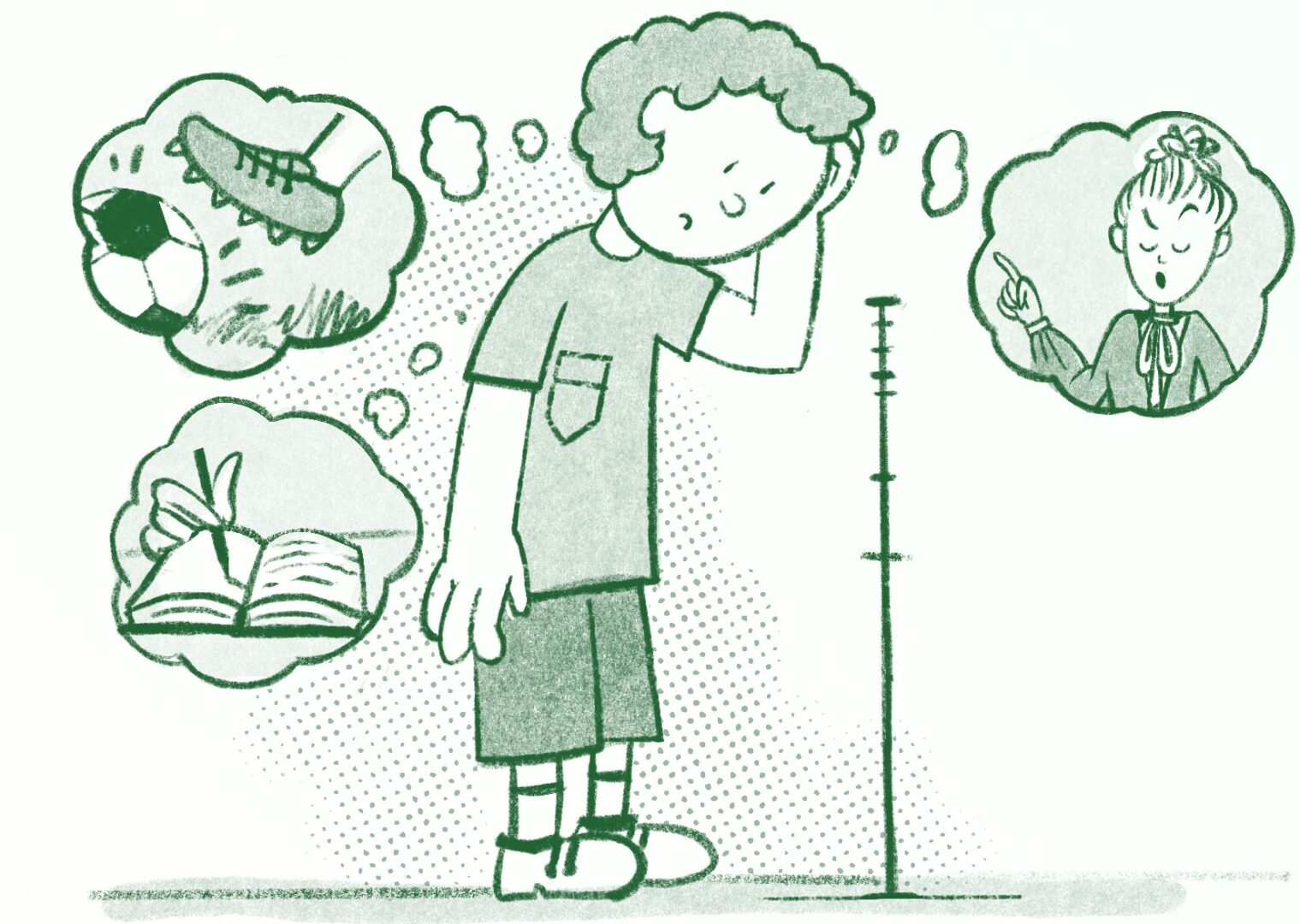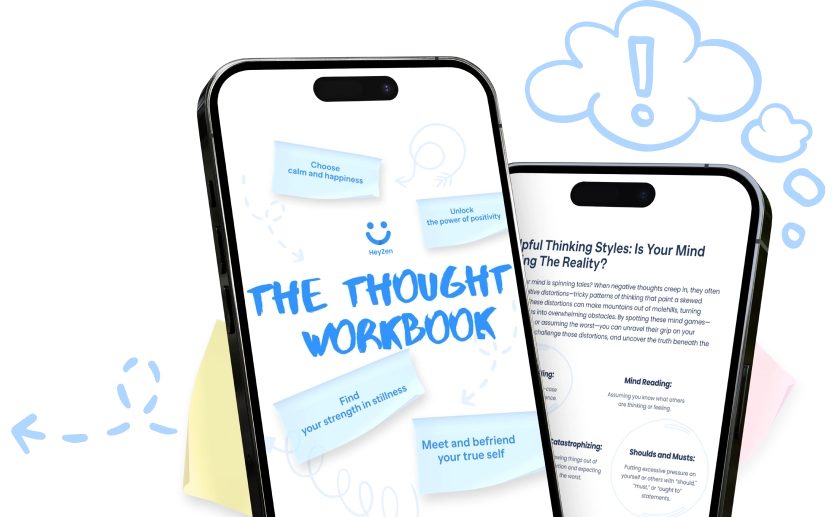ADHD in Teenagers: Symptoms, Treatment, and Similar Disorders

Teenage years aren’t the easiest by definition, and ADHD can put an additional burden on developing minds. Parental expectations, academic performance, peer pressure, and physical changes are multiplied by the disorder and affect teens’ social skills, self-esteem, and mental well-being.
Let’s learn more about ADHD and the most effective way to live unaffected by its symptoms.
Key takeaways
- ADHD is a neurodevelopmental disorder affecting executive functions, such as focus and impulse control. It is present from birth and is considered a form of neurodivergence.
- ADHD has three main types: inattentive, hyperactive-impulsive, and combined. Symptoms vary but often include struggles with focus, organization, impulse control, and restlessness.
- Teenagers with ADHD may face increased risks of substance use, engage in risky behaviors, experience social difficulties, and have sleep problems. These challenges can impact their overall well-being and development.
- Effective treatment combines medication, cognitive behavioral therapy (CBT), and parental education. Schools also provide academic accommodations to support learning, while physical activities and mindfulness practices can help manage symptoms.
- With appropriate strategies and support, teens with ADHD can lead successful lives. Understanding ADHD as a different brain function rather than a deficit helps in developing effective coping mechanisms and achieving a fulfilling life.
What is Attention Deficit Hyperactivity Disorder (ADHD)?
ADHD is a neurodevelopmental disorder that’s present from the very birth. What causes ADHD in children and adults is unknown. However, studies found that it has to do with neurotransmitter imbalance. Neurotransmitters are brain messengers that tell neurons when to turn off the mode of working and focus and when to switch to idling.
In the ADHD brain, neurotransmitters don’t communicate to neurons what mode should be on at the moment, so the “focus” and the “idling” modes are working at the same time. This is why people with ADHD have problems with executive functioning, i.e., keeping things in their working memory, inhibiting impulses to focus, etc.
ADHD is not a condition that teens develop from flunking on school duties or spending too long on their phones. While a phone can be a distraction, there are also specialized apps for ADHD teens that can help them navigate daily life without too much pressure.
Even though it is a disorder, the modern approach to it explains ADHD as just another way of brain functioning. This is why people with ADHD are called neurodivergent, and those with standard brains are called neurotypical.
Teenage ADHD symptoms and types

The American Psychiatric Association created DSM-5, or the Diagnostic and Statistical Manual of Mental Disorders. It outlines diagnostic criteria for ADHD, describing its three types, each having its own set of ADHD symptoms, and three severity levels (mild, moderate, and severe).
Inattentive ADHD type
An inattentive teenager will experience the following:
- Struggles with time management and time blindness.
- Inability to organize tasks and spaces and perform sequential tasks.
- Easy distractibility with both external stimuli and internal thoughts.
- Having a mind somewhere else, even in a one-to-one conversation.
- Forgetfulness.
- Avoiding tasks that require sustained mental effort.
- Making careless mistakes and struggles with following instructions, even when they’re clear.
Impulsive-hyperactive ADHD type
Hyperactivity-impulsivity is revealed as the following symptoms:
- Struggles with waiting for their turn in conversations and queues.
- Intruding on other people’s conversations, activities, and belongings.
- Difficulties with sitting or staying still.
- Constant fidgeting with body parts and objects around.
Combined ADHD type
This type comprises the ADHD symptoms of both types above. The combined type is common among ADHD girls and boys equally and is usually revealed at a severe level.
To be diagnosed with ADHD, those symptoms need to affect life in two or more settings, such as home and school. Don’t forget that other mental disorders can have similar symptoms to ADHD, and only a professional adolescent psychiatry specialist can give you the right diagnosis.
Challenges that come along
Regardless of the type, many teens with ADHD tend to develop frustrating and bothersome patterns, partially due to their diagnosis and partially due to the physical and mental transformation period.
Substance abuse
Often, alcohol, drugs, and smoking become the only available tools to handle difficulties. It’s especially dangerous when a teenager blames themselves for their inherent brokenness or stupidity, as they never had a chance to learn healthy ways of overcoming problems.
The study has found that teens and young adolescents are at increased risk of substance abuse, which includes smoking. Another research shows that they’re 4-5 times more likely to get addicted to heavy cigarettes and marijuana after trying them once. Also, those who have conduct disorder (CD) and oppositional defiant disorder (ODD), together with ADHD, are associated with nicotine use more than other teens.
Basically, they start developing destructive coping strategies to soothe themselves, adjust their sleeping patterns, or deal with anxiety.
Risky behaviors
Teenagers with ADHD fall into risky behaviors because they perceive the benefits to be much greater than the risk they take. They tend to drive without a seat belt or exceed speed limits. For example, car crashes among ADHD young adults are 36% higher than among those without the disorder, according to the study.
Another reason for risky behavior is the biological desire to increase neurotransmitter levels in an easy way. Similarly to substance use, dangerous situations cause spikes of dopamine and adrenaline that people can get addicted to.
Recent research shows that young adults with ADHD are more prone to risky sexual behaviors, such as unprotected sex. It’s most prominent in young women with ADHD, which, in turn, can lead to a much higher risk of sexually transmitted diseases.
Problems with social functioning
Adolescents with ADHD exhibit difficulties with peer relationships. They may have delinquent friends, don’t have any friends at all, or refuse to participate in social activities.
There are many reasons for those problems, as teens may have low self-esteem and experience peer rejection as they behave differently. On the other hand, teenagers with ADHD may reach emotional maturity too early compared to their peers, which can also be a reason for their exclusion from a group.
Sleep problems
Anxiety and mood disorders are common among people with ADHD. They’re caused by high academic expectations and the daily struggles with attention and hyperactivity, which, in turn, may lead to problems with sleep. Irregular sleep patterns lead to further worsening of ADHD symptoms and aggravate mood swings and executive skills, as the brain is overstimulated and doesn’t get enough rest.
How to treat teens with ADHD?
Medical ADHD treatment includes stimulant and non-stimulant medications. Often used as the first resort, stimulants like Adderall XR, Ritalin, etc. aim to increase the levels of neurotransmitters in the brain. If they don’t show results, non-stimulants (Strattera, Kapvay, etc.) are prescribed.
Treating ADHD is impossible without natural, non-invasive ways of overcoming daily problems. While ADHD medications will normalize the chemical levels in the brain, the learned behavior patterns and unhealthy coping strategies will persist and affect life.
Cognitive behavioral therapy (CBT)
CBT is used to treat ADHD symptoms, taking a top-down approach. It doesn’t deal with the root causes of the disorder but teaches a person how to effectively cope with the symptoms.
For example, a teen can learn the practical ways of dealing with poor concentration, how to take over self-control, not fall into impulsivity, and, in general, how to turn their weak executive skills into strong and stable ones.
Basically, a CBT expert gives a person a set of practical tools to lead a normal life and minimize anxiety, not through drugs and risks but with the effortful restructuring of learned brain patterns.
Parents education
One of the CBT branches involves the education of parents. It’s especially important for those whose ADHD children exhibit delinquent behavior or who feel like a failure of a parent as they’re unable to help children through their teen years.
A CBT expert shows parents the correct approaches on how to:
- be consistent with their rewards and consequences,
- help a teen develop effective time management through making daily planners and setting deadlines,
- work out a daily routine and be consistent with it,
- teach children social skills to gain friends,
- cope with parental anxiety, depressive thoughts, and blaming oneself for being a bad parent.
By the way, the research suggests that risky sexual behavior among ADHD girls can be improved through good and secure child-parent relationships.
Academic accommodations
The federal law called the Individuals with Disabilities Education Act (IDEA) requires all educational establishments to support children with disabilities in academic settings for free. For example, a school can supply a teen with:
- special social support groups, a speech therapist, counseling sessions,
- curriculum adjustments and setting personalized achievement plans,
- classroom accommodations, i.e., a changed arrangement of a classroom, a different pace of learning, a larger number of physical activities, etc.
It doesn’t mean that a teen will be excluded from a class, as they’re provided with support. Educators know how to organically introduce those changes in a classroom so that all students don’t feel the negative impact of those accommodations.
Physical activities
Sport is a natural booster of neurotransmitters that works similarly to medications. Numerous studies show great results on how up to 60 minutes of moderate physical exercise improves the core symptoms of ADHD. However, just like drugs, the effects of physical activities diminish with time, so they need to be included in a daily routine of a teen’s life.
Moreover, sports can release excess energy for those suffering from ADHD impulsivity and anxiety. Hence, it can improve sleep patterns and calm down the whirlwind of disturbing thoughts.
Meditations and mindfulness
This type of ADHD treatment is better to practice starting in middle and high school. The thing is that they require a true understanding of the benefits they can bring. The research shows that even 20 minutes of meditation a day helps people improve inattentiveness and hyperactivity.
Meditations teach the brain how to ground and pay attention to the present moment. Basically, you train the skill of attentiveness during this short period of daily exercise to bring this focus further to a day. Moreover, the skill of reminding yourself about the present moment and your current state of mind helps to inhibit harmful impulses.
For instance, instead of immediately putting the hammer down, someone who learns to listen to a caring inner voice and equips themselves with CBT techniques will pause to reconsider their action. They might ask themselves if they really need this adrenaline rush at the moment and remind themselves of healthier ways to overcome the craving.
Can a teenager with ADHD lead a normal life?
The ADHD experience has its own inconveniences and bright sides, just like everything in life. So, the main goal of ADHD teens and their parents is to learn healthy coping strategies and overcome mental barriers toward the diagnosis.
ADHD teens require attention, care, and acceptance. Remember that as a parent, you are your child’s first and biggest source of motivation and support. Check out our list of understanding ADHD quotes you can share with your teenager.
Remember, it’s just one of the ways of brain functioning, and we need to learn how to live with it, just as we would with any other brain type.









